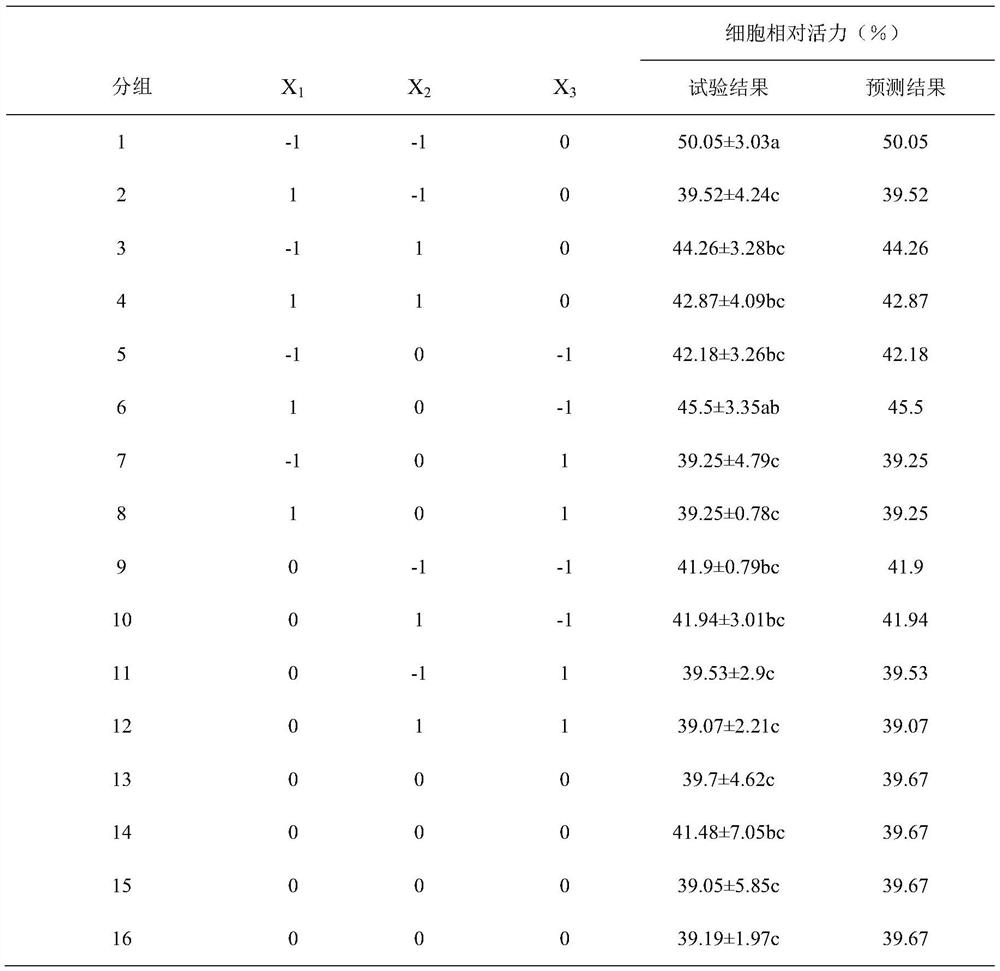Biological antidote for relieving or treating harm of mycotoxin to cells
A technology of mycotoxins and antidotes, which is applied in the direction of anti-toxins, drug combinations, medical preparations containing active ingredients, etc., and can solve problems such as poor adsorption effect, difficult industrialization, and environmental pollution
- Summary
- Abstract
- Description
- Claims
- Application Information
AI Technical Summary
Problems solved by technology
Method used
Image
Examples
Embodiment 1
[0041] First, using different concentrations of aflatoxin B 1 (AFB 1 ), zearalenone (ZEA) and deoxynivalenol (DON) on the toxicity of piglet jejunum epithelial cells (IPEC-J2), the specific process is as follows:
[0042] Cell recovery: take out the frozen cells stored at -80°C, quickly put them into a 37°C constant temperature water bath and shake continuously, and the cells are completely dissolved in about 1min. Centrifuge for 5 minutes, remove the supernatant, add 1 mL of preheated high-glucose medium containing 10% FBS and 1% double antibody to resuspend the cells, then transfer 1 mL of the cell suspension into a cell culture bottle, and then add 4 mL of fresh culture medium. Gently make a cross to spread the cell suspension evenly on the wall of the bottle. 37°C, 5% CO 2 Cultured under certain conditions, the freshly recovered cells need to change the medium once after 24 hours, and the cells are subcultured when the cells grow to 80%-90% of the bottle wall.
[0043...
Embodiment 2
[0060] The inventor screened out a degrading AFB from more than a dozen microorganisms of the genus Bacillus, Saccharomyces, and Lactobacillus. 1 , ZEA, DON have better effects on Bacillus licheniformis, Bacillus coagulans and Clostridium butyricum. Among them, Bacillus licheniformis or Bacillus coagulans have been reported to relieve zearalenone (ZEA), aflatoxin B 1 (AFB 1 ) or deoxynivalenol (DON), but usually, the application of Bacillus licheniformis or Bacillus coagulans only targets one or two of the above three mycotoxins The degradation effect of synergistic virulence of mycotoxins has not been reported before. Clostridium butyricum has been reported to relieve DON, but its effect on ZEA, AFB 1 There is not much disclosure about the detoxification effect on the Internet.
[0061] The inventors first determined the degradation effects of Bacillus licheniformis, Bacillus coagulans and Clostridium butyricum on the combined toxicity of three mycotoxins:
[0062] Take ...
Embodiment 3
[0086] In Example 2, the degradation effects of different probiotics or combinations of probiotics on three mycotoxins were investigated. Then the inventors investigated the specific effects of the above probiotic combination on the cells after the joint treatment of the three mycotoxins:
[0087] IPEC-J2 cells in the logarithmic growth phase were taken, routinely digested and counted, and inoculated into a 96-well plate, 100 μL / well, and the number of cells per well was 1×10 4 , and then place the cell culture plate in CO 2 Cultivate in the incubator for 24 hours, discard the original culture solution, and add PBS buffer solution to wash again.
[0088] Add different concentrations of mycotoxins diluted with cell culture medium, and treat with probiotics and probiotics + chlorogenic acid combination respectively; among them, AFB in high damage group and low damage group 1 , the addition amount of ZEA and DON with reference to embodiment 1, the addition amount of chlorogenic...
PUM
 Login to View More
Login to View More Abstract
Description
Claims
Application Information
 Login to View More
Login to View More - R&D
- Intellectual Property
- Life Sciences
- Materials
- Tech Scout
- Unparalleled Data Quality
- Higher Quality Content
- 60% Fewer Hallucinations
Browse by: Latest US Patents, China's latest patents, Technical Efficacy Thesaurus, Application Domain, Technology Topic, Popular Technical Reports.
© 2025 PatSnap. All rights reserved.Legal|Privacy policy|Modern Slavery Act Transparency Statement|Sitemap|About US| Contact US: help@patsnap.com



